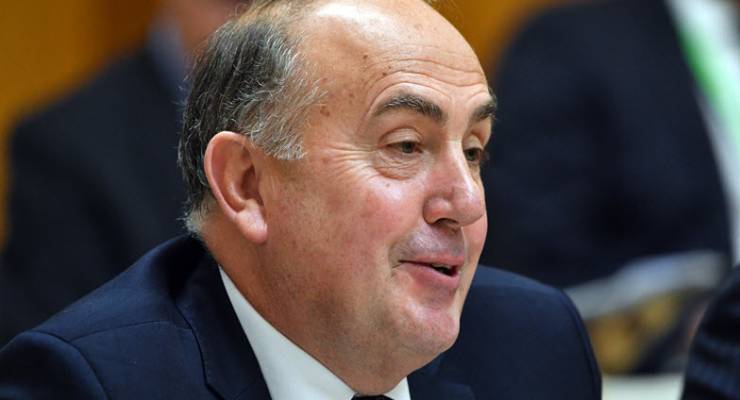
Treasury Secretary John Fraser
While the timing of estimates hearings is out of the hands of the Secretary of the Treasury, John Fraser, yesterday morning, when appearing before the Senate economics committee might have been better advised to frame his comments about wages growth with one eye on the 11.30am September quarter consumer price index (CPI) release.
Fraser had spotted “pockets of wages growth Treasury was starting to see in areas such as construction,” he told the committee. Which is lucky because it’s Treasury that has forecast a significant pick-up in wages growth this financial year from the miserly 1.9% we managed in 2016-17. Of course, problematically, construction (despite the “rogue CFMEU” line from the government and employers) has suffered below-average wages growth in recent years, so a pick-up to at least average levels of wage growth that the rest of us have “enjoyed” is doubtless welcome among the hardworking employees of the building sector.
But there was little sign of any pockets of wages growth in the CPI data, which showed a 0.6% rise in the September quarter CPI, and a fall in annual inflation to 1.8% from 1.9% — compared to forecasts of 0.8% and 2%, respectively.
As expected, electricity and gas prices surged — but they also surged this time last year, so the net impact on the annual rate was minimal. And inflation in other areas was missing altogether — despite the strongest jobs growth for years and, in the words of the Australian Bureau of Statistics, “above the average year-on-year growth over the past 20 years (1.9%)”.
In fact, in macro terms, we’re having a Goldilocks moment hundreds of thousands of jobs have been created, unemployment falling from 5.8% to 5.5% (trend terms) and yet headline CPI has remained below 2% despite the energy sector debacle. Phillips Curve? What Phillips Curve?
And what’s happened to inflation? The AMP’s chief economist Dr Shane Oliver noted yesterday that there was a distinction between private sector and public sector inflation:
“inflation in the private sector part of the economy is running at just 1.2% year on year (yoy) as measured by the ‘market goods and services ex volatile item’ index. Inflation in the government affected parts of the economy is running much higher with prices for alcohol and tobacco up 7% yoy (thanks to tax hikes), utilities up 8.9% yoy, health up 3.9% yoy and education up 3.1% yoy.”
So the only inflation we’ve got is from either government policy, or in the electricity sector, government policy chaos.
As the ABS showed, the weakness of price pressures was evident across a wide range of areas: clothing prices (down 3.2% year-on-year), rents (only up 0.5% year-on-year), furnishings (down 3.1% year-on-year) and most household items, cars (down 1.2% year-on-year) and telecommunications (down 3.2% year-on-year).
That reflects weak underlying demand in the economy and deepening competition in retailing (which will intensify when Amazon arrives) and the rise in the Australian dollar earlier this year. Weak consumer spending has also seen retailers and other companies forced to swallow what cost pressures are around, by trimming margins or costs. As CommSec’s Craig James pointed out yesterday that, “while there has been much bleating about higher electricity prices, there hasn’t been the same focus on falling food prices — recording the biggest annual decline in prices in five years”.
This current quarter is expected to bring pressure on the CPI from a weaker dollar, higher oil and petrol prices — although the slow start to penalty rate cuts will start appearing in the retail and hospitality sectors.
None of this augurs well for the much-hoped for surge in wages growth that Fraser and the government insist is just around the corner.








Damned reality refusing to comply with theory yet again!
Why are economists even fed?